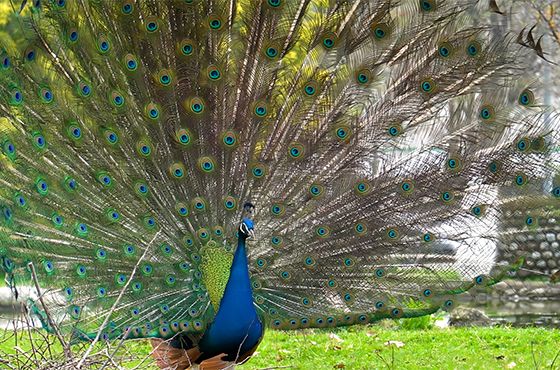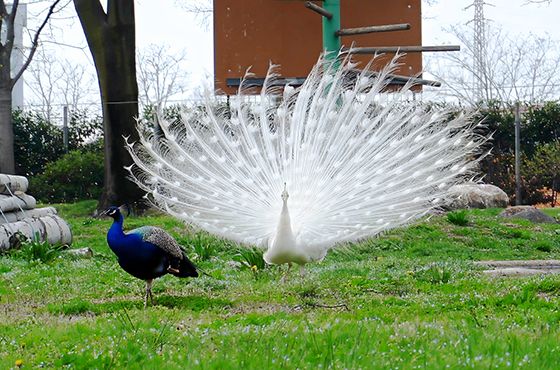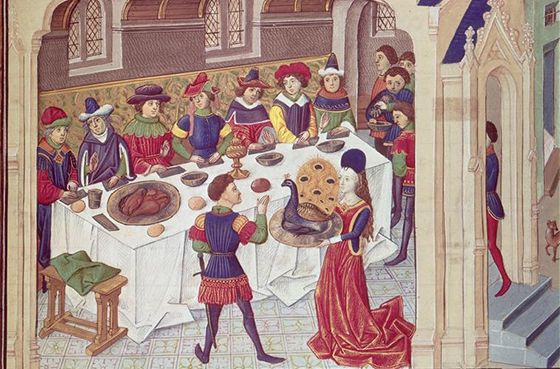The peacock

Every year in spring, a magnificent display of colorful wheels takes shape among oaks, pines and hundreds of other tree species in the RAASM Oasis-Park. These are the peacocks, which flaunt their back feathers open like a fan during courtship. More than a hundred of them, of different species and varieties, live freely in the 12 hectares of botanical area: blue, green and white peacocks, as well as numerous hybrid specimens, called harlequin peacocks because of the dappled colors of their plumage.
The peacock is a bird in the Gallimorph family, native to India and Sri Lanka, where it still lives in the wild. In the rest of the world, however, it is easier to find in backyards and gardens, bred for ornamental purposes. Due to the magnificence of the wheel, which the male sports in the mating season, it is universally considered synonymous with beauty and a sign of nobility.
It is a sedentary animal. It suffers if removed from its birthplace and is very territorial. It feeds on fruits, seeds and insects as well as small vertebrates such as mice, frogs and snakes. Despite the awkwardness caused by the long drag, it can fly, although it usually just leaps between tree branches to reach elevated places to spend the night, then glides to the ground in the morning. Adult specimens weigh up to 6 kilograms and reach a wingspan of 1,5 meters.
It suffers if removed from its birthplace
and is very territorial.
There are three species of peacock, and some varieties of different colors in plumage. The most common is the pavo cristatus (blue or Indian peacock): males are conspicuous, with electric blue necks, green tail feathers and bronze-gold backs; in females, however, the long back feathers are absent and the colors are more modest, tending toward brown. Less common are the pavo muticus (green or Indonesian peacock), found only in Indochina, and the afropavo congensis (Congo or African peacock), which lives in the forests of Congo. Among the most fascinating varieties is the white peacock, a particular type of pavo cristatus: the whiteness of the plumage is not due to albinism but to leucism, a recessive genetic peculiarity that turns the animals’ livery white. The peacock’s wheel is made up of more than one hundred and fifty feathers that can reach 2 meters in length. Fanned open, its primary function is courtship: males attract the attention of their chosen one with dances that, thanks to feather fibers, reflect sunlight in colorful iridescence. The second purpose is defensive: the ‘eyes’ dotting the wheel serve to disorient potential predators.

Males attract the attention of their chosen one
with dances that, thanks to feather fibers,
reflect sunlight in colorful iridescence.

In ancient Rome and throughout the Renaissance
it was considered a delicacy for refined palates.
The magnificent drag that covers the backs of males has been a worry for evolutionary biologists since Darwin’s time. From the perspective of natural selection, the peacock is an evolutionary paradox. How is it possible that it developed that long, heavy drag, which makes it clumsy in flight and more susceptible to being grabbed by predators? Darwin himself gives the answer. Underlying the process that led the peacock to today’s characteristics is not so much natural selection, but sexual selection. The specimen with the best characteristics for survival does not win, but the one most favored by the opposite sex does. In the case of the peacock, the most beautiful. Thus, females are credited with selecting the genes that led the peacock to have the wheel of today’s size and magnificence.